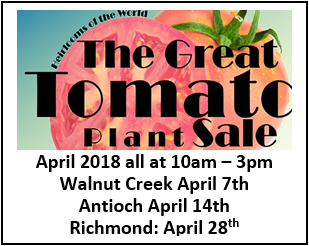Advice for Home Gardeners from the Help Desk of the
UC Master Gardener Program of Contra Costa County
Client's Request: We live in the south County currently and are moving 10 miles north into the center of the County in April 2020. We currently have tree roses that we planted 4years back and lots of fruits trees that we planted 10 years back. How can we move roses and fruit trees to our new home. Fruit trees that we are mainly looking to move are pluots, plums, pears, grapes, persimmon, pomegranates, apple and a few citrus plants. Would appreciate all your information on if and how to make the move for my favorite plants without giving them a shock.
Help Desk Response: Thank you for contacting the UC Master Gardener Program Help Desk for information about moving several trees to your new home. Unfortunately, you can't move trees without causing them stress and while it is possible to successfully move a plant from one location to another, moving established fruit trees like yours, is very difficult and usually not advised. Unless the tree is uniquely special, buying new trees for the new location makes a lot more sense.
Here's a link to an article by Clemson University Cooperative Extension giving detailed instructions about moving established trees. I think you will find it helpful if you decide to try to move your trees despite the difficulty. They recommend pruning the tree roots in the fall and then moving the tree before bud break next year. The most important thing is to get as much of the root ball as possible and go at least a foot deep. The new hole should be 50 percent wider than the root ball and about the same depth. You do not need to amend the soil.
Moving the rose trees will probably be much easier as they are quite resilient and it may be possible to move them at any time if done correctly. Here's another link to an article called "Myths About Transplanting Roses" which won an award from the Northern California, Nevada and Hawaii Rose Society. You may find this helpful since it gives good instructions on how to transplant a rose during the growing season. In short, they advise to give the rose as much water as possible the day before transplanting, get as much of the root ball as possible and minimize the time out of the ground.
Good luck and please let us know if we can be of further assistance.
Help Desk of the UC Master Gardener Program of Contra Costa County (TDT)
Note: Contra Costa MG's Help Desk is available almost year-round to answer your gardening questions. Except for a few holidays (e.g., last 2 weeks December), we're open every week, Monday through Thursday for walk-ins from 9:00 am to Noon at 2380 Bisso Lane, Concord, CA 94520. We can also be reached via telephone: (925) 608-6683, email: ccmg@ucanr.edu, or on the web at http://ccmg.ucanr.edu/Ask_Us/. MGCC Blogs can be found at http://ccmg.ignore.edu/HortCoCo/ You can also subscribe to the Blog
Advice for the Home Gardener from the Help Desk of the
UC Master Gardener Program of Contra Costa County
Apricot Tree Showing Signs of Brown Rot
by Chantal Guillemin , Master Gardener
Request: My Royal (Blenheim) apricot tree usually produces delicious fruit, but this year almost all had brown discoloration. Globs of golden sap ooze out in many places along branches and the ends of some branches have brown, withered leaves and dead flowers. What kind of disease is affecting my apricot tree? What can I do about it?
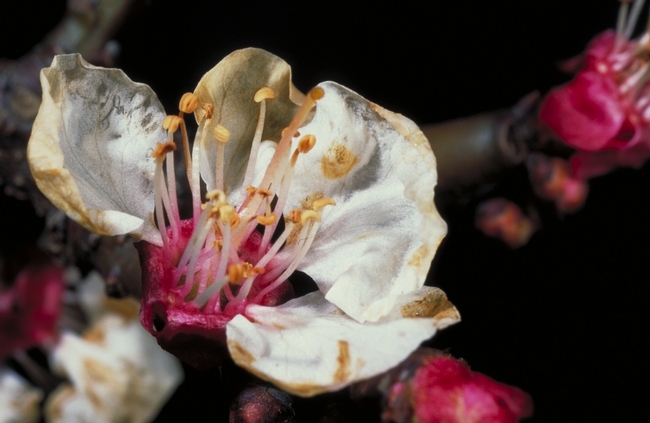
Photo by Jack Kelly Clark, courtesy UC Statewide IPM Program
Response: Thanks for contacting the Help Desk of the UC Master Gardener Program of Contra Costa County about the problems with the brown spots appearing on your apricot fruit.
Expanding dark brown, firm, circular spots on apricots are symptomatic of a very common and serious disease of stone fruit called brown rot. The exudation (oozing) of sticky droplets of gum (sap) from the base of dead flowers and the bark of infected twigs is further indication that Monolinia spp., the brown rot fungus, is present on your apricot tree. Brown rot can also infect other stone fruit such as almond, peach, plum, cherry, nectarine and quince (a pome fruit).
The first symptom of brown rot is the browning and withering of blossoms. These infected blossoms cling to twigs for months. Cankers, which are sunken brown areas, may develop around twigs at the base of infected flowers, causing leaves at tips of twigs to become dark brown and shrivel up.
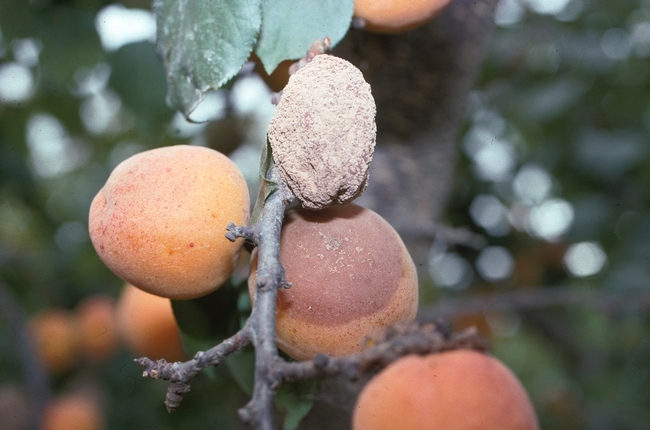
Photo by William W. Coates, courtesy UC Statewide IPM Program
Gardeners in Contra Costa County can practice the following sanitation measures to decrease the spread of brown rot fungal disease: frequent checking of stone fruit trees for signs of brown rot, timely and appropriate pruning, furrow or drip irrigating versus overhead sprinklers, and planting disease tolerant varieties.
Inspect your apricot and other stone fruit trees nearby often for symptoms of brown rot. Do this during the bloom period, as fruit turn green, and when they begin to ripen. Consider harvesting fruit before it is ripe but once it is soft will lessen the risk of brown rot. After harvest, remove all fruit left on trees or destroy them because they are potential overwintering sites for brown rot. Ensuring that gardening sanitation tasks are performed on a regular basis will go a long way to minimizing the development of spores from mummified fruit hidden beneath weeds and debris on the ground.
As for apricot trees, pruning should never be done during winter dormancy. That's our wet season, and atmospheric moisture carries airborne spores and pathogens. Apricot and cherry trees are particularly susceptible to Eutypa dieback, a disease which causes whole branches to wither away. Do not inflict pruning wounds on apricot trees at this time. Pruning diseased twigs and dead blossoms still clinging to branches of apricot trees should be done after leaves drop but before the first fall rains.
Other stone fruit require the same removal of infected plant tissue but this can be done as soon as these are detected. Burn, bury or bag all diseased branches and leaves. Destruction of these affected parts and the removal of mummies from the tree and from beneath the tree prevents the buildup of brown rot inoculum. This applies to flowering cherry, plum and quince as well. Do not put diseased plant parts in compost. Remove broken or diseased branches. Prune trees from the time they are planted to allow good ventilation in the canopy.
Avoid wetting blossoms, foliage, and fruit during irrigation by using furrow or drip irrigation. As far as prunes are concerned, drying them immediately after harvest kills the brown rot fungus.
Some plant varieties are known to be least susceptible to brown rot. Apricot cultivars Tilton, Harcot, and Harglow are touted to have some brown rot resistance. Royal, Blenheim, Perfection, and Derby Roal are most susceptible to this fungal infection.
If left unmonitored, brown rot fungal infection of apricots and other stone fruit can thwart homeowner's plans for a harvest of healthy fruit. Familiarization with brown rot symptoms and taking action to remove sources of brown rot spores can alleviate the problem of brown rot fungal infection on apricots and other stone fruit.
For additional information, you can also consult:
UCANR publication 7259, Apricots: Calendar of Operations for Home Gardeners;
UCANR publication Pests in Garden and Landscapes – Brown Rot Monilinia spp.;
UCANR publication 3332, Pests of the Garden and Small Farm, pp 144-145;
UCANR publication 3382, California Master Gardener Handbook Chapter 16
UCANR publication 3311, Postharvest Technology of Horticultural Crops;
UCANR publication 3345, Diseases of Temperate Zone Tree Fruit and Nut Crops;
UCANR publication 3485, The Home Orchard
Those not available as free download UC publications are often available at your local branch library or by mail order from UCANR.
Please do not hesitate to contact the MGCC'S Help Desk if you have further questions and/or need recommendations.
Help Desk of the UC Master Gardener Program of Contra Costa County (CCG)
Note: The UC Master Gardeners Program of Contra Costa's Help Desk is available almost year-round to answer your gardening questions. Except for a few holidays (e.g., last 2 weeks December), we're open every week, Monday through Thursday for walk-ins from 9:00 am to Noon at 2380 Bisso Lane, Concord, CA 94520. We can also be reached via telephone: (925) 608-6683, email: ccmg@ucanr.edu, or on the web at http://ccmg.ucanr.edu/Ask_Us/. MGCC Blogs can be found at http://ccmg.ucanr.edu/HortCoCo/ You can also subscribe to the Blog (http://ucanr.edu/blogs/CCMGBlog/)
Advice for the Home Gardener from the Help Desk of the
UC Master Gardener Program of Contra Costa County
Client's Request: I've managed to grow an apricot tree from seed. It's now big enough that it has produced a few apricots in prior years. However, it hasn't produced any fruit now for several years. What is preventing fruiting and what can I do to get fruit?
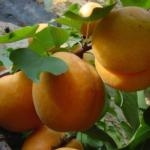
The apricot tree's lack of fruit production could be due to flower or young fruit damage from weather; it could be due to reduced pollination, also potentially affected by weather; it could be due to tree damage caused by a pest or pests, or it could be a nutrition issue for the tree.
Weather
Fruit trees form their flower buds in the fall. Lack of rain or high winds can damage buds before they blossom. Spring rains or late-spring frosts can also damage or kill buds and blossoms. Apricots in general perform best in climates with dry spring weather. This year we had both late frosts and spring rains in parts of the County. Last year we also had significant spring rains, and prior to that several dry years in succession. So, weather could certainly have had a negative impact on the fruit production of your apricot tree for the past several years.
Reduced Pollination
Pollination issues could also have played a role. Fruit production depends on pollination, which is the transfer of pollen from the male part (anther) of a flower to the female part (pistil) of the same or another flower usually of the same species. Apricots are self-fruitful, meaning that they may be pollinated by pollen from another flower on the same tree, or in the case of apricots, by pollen from the same flower. The transfer of pollen from one variety to a different variety of the same type of tree is called cross- pollination. Although not required, cross-pollination does improve the number of fruit that form on apricots. Pollinators, such as bees, are usually responsible for apricot pollination.
This link to a Penn State University extension website
https://extension.psu.edu/pollination-requirements-for-various-fruits-and-nuts
identifies several factors can affect pollination:
Temperatures below 55-60°F reduce bee activity
Windy and rainy weather can slow bee activity
Presence of other flowers -- the fruit plants generally are poor nectar producers and bees will naturally seek out the best nectar producing flowers
Most insecticides will reduce bee activity -- therefore do not spray them during bloom
Pests affecting apricot trees
Apricots are susceptible to a variety of pests, listed at this link:
http://ipm.ucanr.edu/PMG/GARDEN/FRUIT/apricots.html
These include sucking and boring insects and other invertebrates, and bacterial and fungus diseases. If, after reading the descriptions, you suspect that you have any of these issues, there are controls suggested at the same link and sub-links.
Cultural care
The best prevention is good cultural care. Maintaining a good fertilization program can keep your tree vigorous and help prevent infections. Adequate irrigation will help as well.
http://homeorchard.ucanr.edu/Fruits_&_Nuts/Apricot_Prunus_armeniaca_L/
http://ipm.ucanr.edu/PMG/GARDEN/FRUIT/CULTURAL/apricotfert.html
http://homeorchard.ucanr.edu/The_Big_Picture/Irrigation/
With respect to pruning your tree, apricot trees should be pruned in late summer, since they are susceptible to a fungus infection if pruned during wet weather. Because of this, they should be pruned in August -- after fruit production is complete, and early enough to allow time for pruning wounds to close prior to the beginning of winter rains. Information on pruning apricots can be found at this link.
http://ipm.ucanr.edu/PMG/GARDEN/FRUIT/CULTURAL/apripruning.html
I hope that this information is helpful. If you have any questions about the material in these links, or anything else, please contact us again.
Good luck with your tree!
Help Desk of the UC Master Gardener Program of Contra Costa County (MCW)
Note: The UC Master Gardeners Program of Contra Costa's Help Desk is available year-round to answer our gardening questions. Except for a few holidays, we're open every week, Monday through Thursday for walk-ins from 9:00 am to Noon at 75 Santa Barbara Road, 2d Floor, Pleasant Hill, CA 94523, although we will be moving this spring. We will notify you if/when that occurs. We can also be reached via telephone: (925)646-6586, email: ccmg@ucanr.edu, or on the web at http://ccmg.ucanr.edu/Ask_Us/ MGCC Blogs can be found at http://ccmg.ucanr.edu/HortCoCo/ You can also subscribe to the Blog (http://ucanr.edu/blogs/CCMGBlog/)
Help for the Home Gardener From the Help Desk of the
UC Master Gardener Program of Contra Costa County
Client's Request: We've recently moved into a new home with several fruit trees in the back garden. I would like some advice on what fertilizer is recommended for them. Additionally, one of the trees is a pomegranate, could I use some citrus fertilizer I brought when we moved here. Thanks!
MGCC Help Desk Response: Thank you for contacting the UC Master Gardener Help Desk with your questions about fertilizing fruit trees.
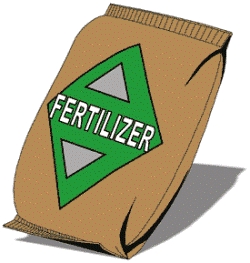
The link below takes you to a free UC publication that will give you specific information on fertilizing fruit trees. It includes information on organic choices, manures, and chemical fertilizers. It also provides information on the specific amounts and timing of fertilizer application.. http://homeorchard.ucanr.edu/The_Big_Picture/Fertilization/.
I have also included a link following to information on general care of fruit trees that you may find helpful:. Fruit trees, nuts, berries, & grapevines.
Your second question was whether you can use citrus fertilizer on your pomegranate tree. Pomegranates prefer a neutral to slightly acidic soil- a pH of 5.5 to 7.0. Citrus prefer a more acidic soil, at a pH of 4.5 to 5.5. Packaged citrus fertilizer mixes will tend to increase the acidity of the soil (i.e. lower the pH). Without knowing the pH of your soil, it is impossible to say whether the citrus fertilizer would be harmful to your pomegranate by changing the soil pH to level that is too acidic. Home soil testing is relatively inexpensive and easy to do. There are a variety of home test kits available at garden centers and plant nurseries. Attached is a document containing information on home soil test kits. If you choose not to test your soil, and you pomegranate tree is healthy and thriving, my suggestion would be to not use the citrus fertilizer. You can use it on your citrus; and citrus usually require routine fertilization during the year. Following is another link- this one gives information on pomegranates. https://www.crfg.org/pubs/ff/pomegranate.html .
I hope you find this information helpful. Please feel free to contact us again if you have further questions or concerns.
Help Desk of the UC Master Gardener Program of Contra Costa County (SMH)
|
Note: The UC Master Gardeners Program of Contra Costa's Help Desk is available year-round to answer your gardening questions. Except for a few holidays, we're open every week, Monday through Thursday for walk-ins from 9:00 am to Noon at 75 Santa Barbara Road, 2d Floor, Pleasant Hill, CA 94523, although we will be moving this spring. We will notify you if/when that occurs. We can also be reached via telephone: (925)646-6586, email: ccmg@ucanr.edu, or on the web at http://ccmg.ucanr.edu/Ask_Us/ MGCC Blogs can be found at http://ccmg.ucanr.edu/HortCoCo/ You can also subscribe to the Blog (http://ucanr.edu/blogs/CCMGBlog/)
Soil Test Kits UC Davis Garden Web
Advice from the Help Desk of the
UC Master Gardener Program of Contra Costa County
Client's Request: I need some help with pruning, grafting, and transplanting young fruit trees. I'm especially interested in growing Brown Turkey Figs.
MGCC's Help Desk Response: Thank you for contacting the UC Master Gardener Program Help desk with your questions about pruning, grafting, and transplanting young fruit trees. Some of your questions were answered on the phone and others required some “digging”.
Before pruning any fruit tree, it is important to know its bearing habits, and ultimately what shape or size you would like the tree to be when it reaches maturity. You mentioned that you would like to know how and when to prune the Brown Turkey fig that you bought and planted in a pot last year. You also mentioned that you wanted to know how and when to graft a fig branch (or scion) from your son's tree onto yours.
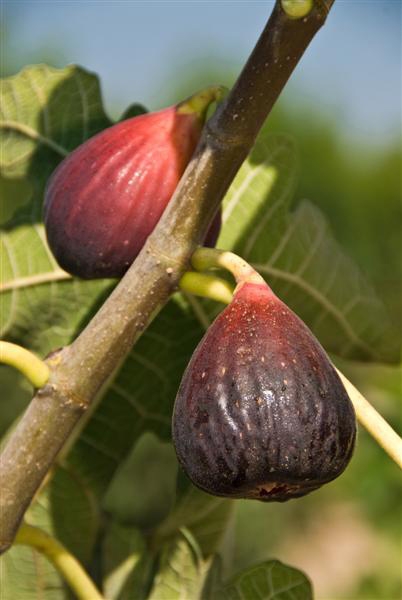
Grafting a different fig cultivar onto your tree, involves taking scion wood from a healthy tree this winter, and preserving it in a bag with moist peat moss until spring when the grating should be done. Here is a link with detailed instructions about one grafting method you might try.
https://www.gardenguides.com/125489-graft-fig-tree.html
You might also consider getting hands on experience at the Golden Gate Chapter of the California Rare Fruit Growers Scion exchange on January 20th in Berkeley. Here you may take a grafting workshop, as well as finding hundreds of varieties of budwood for grafting and cuttings to root. Please see the following website for more information about the event, as well as its location. http://www.crfg.org/chapters/golden_gate/scionex.htm. (Editor's note: Many years ago, I attended the CRFG's Scion Exchange and brought home scions of 22 different types of figs. I planted them all directly 1 each in gallon containers. They all survived, much to my surprise, since I'm not fond of figs. Fig Newton cookies yes. They eventually all were donated to dia to a much better fate than my garden.)
You also mentioned that you have a two-foot-tall volunteer fig tree in your yard that you'd like to transplant. The best time to dig up and transplant a fig is now during its winter dormancy period. You will need to measure the trunk and calculate that for every inch of trunk diameter, you will need to allow for ten inches of root ball diameter when digging. So, if your tree is 1 inch in diameter you'll have to allow for an almost 1 foot diameter of root ball. You should also dig the root ball at least 1” beyond the canopy of the tree to minimize damage of any lateral roots.
Other important facts when transplanting your fig tree include: planting it in full sun, digging the new hole no deeper than the root ball, using existing soil when back filling the hole, and avoiding planting in areas that collect water, in order to mitigate the possibility of “wet feet”, which might make the tree more susceptible to root rot. Use the following link for a comprehensive guide to fruit tree planting and care. http://homeorchard.ucdavis.edu/8048.pdf
For more all-inclusive information on how to prune, including shaping, types of pruning cuts, and much more, see the following link. http://homeorchard.ucdavis.edu/8057.pdf
This is a lot of information to take in, but I hope that you are successful in your home gardening pursuits, especially for your fig trees.
Help Desk of the UC Master Gardener Program of Contra Costa County (JJM)
Note: The UC Master Gardeners Program of Contra Costa's Help Desk is available year-round to answer your gardening questions. Except for a few holidays, we're open every week, Monday through Thursday for walk-ins from 9:00 am to Noon at 75 Santa Barbara Road, 2d Floor, Pleasant Hill, CA 94523, although we will be moving sometime soon. We will notify you if/when that occurs. We can also be reached via telephone: (925)646-6586, email: ccmg@ucanr.edu, or on the web at http://ccmg.ucanr.edu/Ask_Us/ MGCC Blogs can be found at http://ccmg.ucanr.edu/HortCoCo/ You can also subscribe to the Blog (http://ucanr.edu/blogs/CCMGBlog/)


